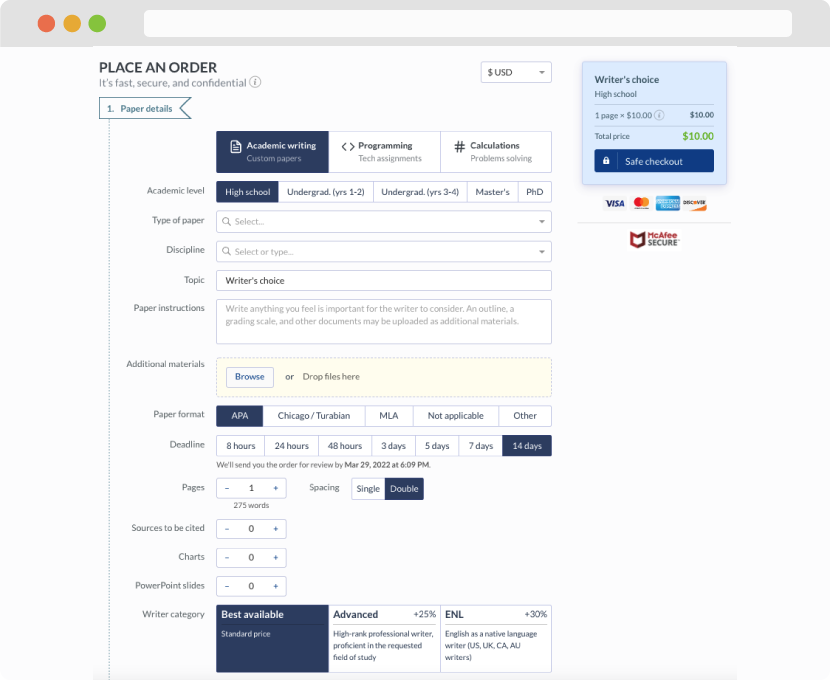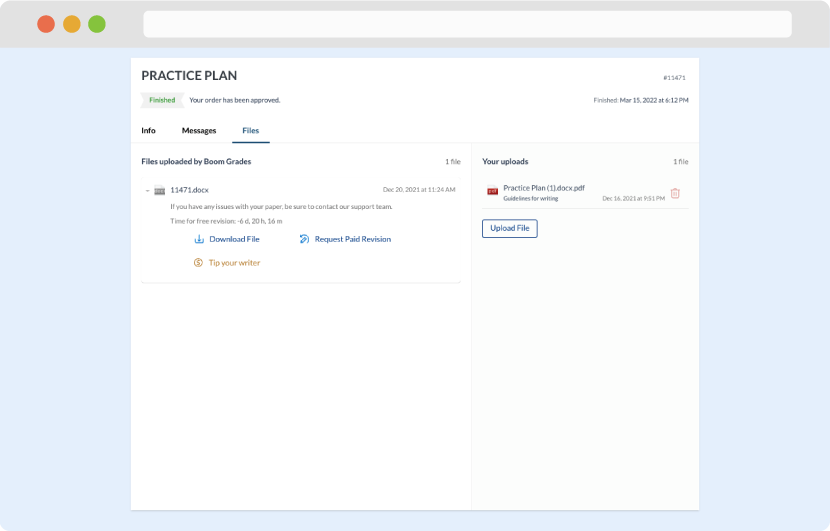STUDENT POST 1:
Cost-effective analysis helps to determine whether health care resources are going where they are needed the most. With the high cost of health care services in the U.S. and the vast health disparities that continue to exist around the world, cost effective analysis seems more vital than ever. “Cost effective analysis is imperative because it assists in finding interventions that are relatively inexpensive, yet have the ability to significantly reduce poverty and disease. Cost effective analysis provides a way to consider the gains of an intervention versus the costs and risks, straightforwardly comparing the economic and scientific consequences of any given program” (Unite for Sight, n.d.). To calculate cost effective analysis, monetary cost of the intervention would be divided by the expected health gain.
Some pros of the cost effective analysis model are: comparing the same disease, but with different programs, comparing different disease with different intervention methods, and comparing different programs for the same demographic group. Most third-world countries have limited resources, and so will see the importance in using the most cost effective interventions available. To use cost effectiveness to the best of its ability, it is important to remember the people and region affected, and the services that the interventions will cover. Also, to consider whether the intervention will be doing enough to fight the main causes of the disease using preventative measures. Some cons of cost-effective analysis are that different countries can put out wildly different cost estimates depending on the scope, time and travel needed.
To determine which cost-effective evaluation works best, the measures between benefit and harm would need to be analyzed. Evaluating cost effective measures takes into account which ones will be the most beneficial to the targeted population, while doing the least amount of harm. The benefits and harms of a cost-effective program must carefully be identified to see whether they are measurable or not. To be able to measure a program’s effectiveness results in the most accurate information being available. “A number of different measures of effect may be useful in the cost-effectiveness analysis. The most common measures of effect in cost-effectiveness analysis are related either to changes in morbidity or survival. Epidemiologists are critical in securing such information, particularly morbidity, since programs designed to eliminate or reduce risk factors should lead to less disease in future years” (Fleming, 2008). The usefulness of a program’s effectiveness stems on how it measures longevity and quality of life. If a program is measuring infant mortality related to birth weight, epidemiologists will need to look at how quality of life factored into the life span of the infant. This is a program that would need fairly accurate evaluation measures to be effective.
References
:
Fleming, S. T. (2008). Managerial Epidemiology: Concepts and Cases(3rd ed.). Chicago, IL: Health Administration Press
Unite for Sight. (n.d.). Cost Effective Analysis.Retrieved from
www.uniteforsight.org/metrics-course/cost-effectiveness
STUDENT POST 2:
Cost-effectiveness analysis is used to compare the costs and outcomes of alternative policy options. Each resulting cost-effectiveness ratio represents the magnitude of additional health gained per additional unit of resources spent (Bertram). The purpose of cost effective analysis is to develop programs, then determine whether the programs are feasible based on the estimated costs of implementing and providing such services. More specifically, the goal of cost-effective analysis is to provide services to as many individuals with a particular illness, demographic or location for the least amount of cost. By utilizing cost as a discipline, administrators, based on budgetary constraints, can determine whether a program is feasible or not. The proposed program may go through a series of revisions before it is considered cost effective to implement.
Cost-effectiveness should be used alongside other considerations – e.g. budget impact and feasibility considerations – in a transparent decision-making process, rather than in isolation based on a single threshold value (Bertram). By focusing on one process, example cost, like any project, trip, or purchase, if the information obtained is incorrect or underestimated, the end result could lead to an ineffective, overpriced program that provides little or no assistance to the demographic it was designed to help.
Cost-effective analysis can be extremely beneficial when comparing interventions with one another, in particular when researchers want to: compare different programs for the same disease; compare different programs for a certain demographic sector; compare different interventions for different diseases (UNITE FOR SIGHT). Cost-effective analysis can be extremely useful especially when programs have already been implemented and have a history of success and cost. In order to use in information about cost-effectiveness of past interventions in the most valuable way possible, it is important to: Take into account how prices, demographics, epidemiology or service coverage would differ substantially in the specific region; Consider whether or not this intervention targets the chief causes of disease in the country; Decide if the interventions are practical based on the standing establishments and past experiences and assess the cost-effectiveness considering how the intervention is implemented and how items are distributed (UNITE FOR SIGHT).
Limitations associated with cost-effective analysis is primarily associated with the inconsistency of how the calculation is performed. Some studies place the same value on every life regardless of age, whereas other studies take into account how many years an individual has left to live (UNITE FOR SIGHT). Other factors are whether the costs are fixed or variable. The administrators would want to fix as many expenses as possible to minimize future price increases. Analysis, additional costs such as dedication of time and transportation also need to be considered by estimating the costs associated with what could be considered as variable expenses. Differences in choices of these measurement units significantly impact the interpretation of the analyzed information (UNITE FOR SIGHT).
Cost-effective analysis can be a useful tool when duplicate services are provided to a demographic to combat disease. By combining efforts more lives can be touched, expenses can be reduced, resulting in a more cost-efficient program. Where risks are a concern, is the implementation of a new program. With the implementation of a new program historical data may not be available, therefore, budgeting is based on estimates. If the cost estimates are incorrect, or costs that were not anticipated incurred, the results can be devastating to the organization or institution that is implementing the program. Cost-effective analysis should be transparent and utilized in conjunction with other processes such as budgeting. By utilizing as many resources as possible, an informed, educated decision can be made to minimize the risk.
References
Bertram, Melanie Y., Lauer, Jeremy A., De.Joncheere, Kees, Edejer, Tessa, Hutubessy,
Raymond, Kieny, Marie-Paule, Hill, Suzanne R. (2016). Cost-effectiveness thresholds:
pros and cons. World Health Organization.
Retrieved from:
https://www.ncbi.nlm.nih.gov/pmc/articles/PMC
5153921.
Fleming, Steven T. (Ed.). (2015). Managerial Epidemiology Cases & Concepts, (3rd ed.).
Chicago, IL: Health Administration Press.
UNITE For Site. Cost-Effective Analysis.
Retrieved from:
https://unitefor
sight.org/metrics-course/cost-effectiveness.
Essay Writing Service Features
Our Experience
No matter how complex your assignment is, we can find the right professional for your specific task. Achiever Papers is an essay writing company that hires only the smartest minds to help you with your projects. Our expertise allows us to provide students with high-quality academic writing, editing & proofreading services.
Free Features
Free revision policy
$10Free bibliography & reference
$8Free title page
$8Free formatting
$8How Our Dissertation Writing Service Works

First, you will need to complete an order form. It's not difficult but, if anything is unclear, you may always chat with us so that we can guide you through it. On the order form, you will need to include some basic information concerning your order: subject, topic, number of pages, etc. We also encourage our clients to upload any relevant information or sources that will help.
Complete the order form
Once we have all the information and instructions that we need, we select the most suitable writer for your assignment. While everything seems to be clear, the writer, who has complete knowledge of the subject, may need clarification from you. It is at that point that you would receive a call or email from us.
Writer’s assignment
As soon as the writer has finished, it will be delivered both to the website and to your email address so that you will not miss it. If your deadline is close at hand, we will place a call to you to make sure that you receive the paper on time.
Completing the order and download